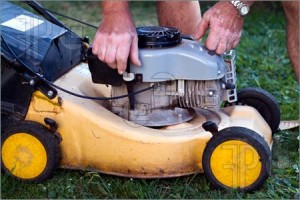
Recently I needed to make a spare parts repair or replace decision because I experienced something that might be familiar to some readers – an equipment breakdown!
Last week I was mowing the lawn at the back of my house when my 15 year old lawn mower just gave up. There I was with the job half done, a broken piece of equipment, and no immediate spare. Sound familiar?
This situation raised a couple of important questions:
1. How was I going to finish the job that day?
2. Should the mower be repaired or replaced?
The first question was answered by my neighbor who lent me his mower; thanks Bernie. The second question needs more thought.
Users and maintainers of plant and equipment face the repair/replace decision almost daily and it is a pretty important decision, with both significant complications and implications.
For example, there are three types of items that might need to be considered:
1. Repairable items: those items held as stock in the warehouse and used as a replacement when an item fails in service.
2. Rotable items: these are also held in the warehouse but tracked as assets in the maintenance system.
3. Plant & equipment: the operating plant and equipment where there is no spare held.
Should each item type be treated the same? Does the difference between opex and capex affect the decision? Who decides the best course of action? Is that action always the same?
In my view, any organization that is serious about how it manages its spare parts inventory must establish a guideline or policy to assist in the repair/replace decision. Leaving the choice up to individuals results in ad-hoc and inconsistent decision making and can lead to both increased risk and cost.
There is risk because we all have a different view (or threshold) for the potential of a failure in service. Some people never want to throw things out and will just keep on repairing them. Just look at the junk you find in almost all maintenance workshops.
The cost issue gets you in two ways. First it might not be the best economic decision to just buy new every time there is a failure. Second, it might also not be the best decision to keep repairing and therefore paying both repair and breakdown costs. It depends on the resulting reliability. For some items the repair/replace decision is simple (especially if the item is low cost) but for others it’s complicated. That’s why a policy or guideline is a must.
Going back to my lawn mower; Bernie thought that, because of the mower’s age, it’s not worth repairing – at any cost. His argument is that the newer machines are more efficient and quieter. You and I might have a different opinion but then again he might just be sending me a message!